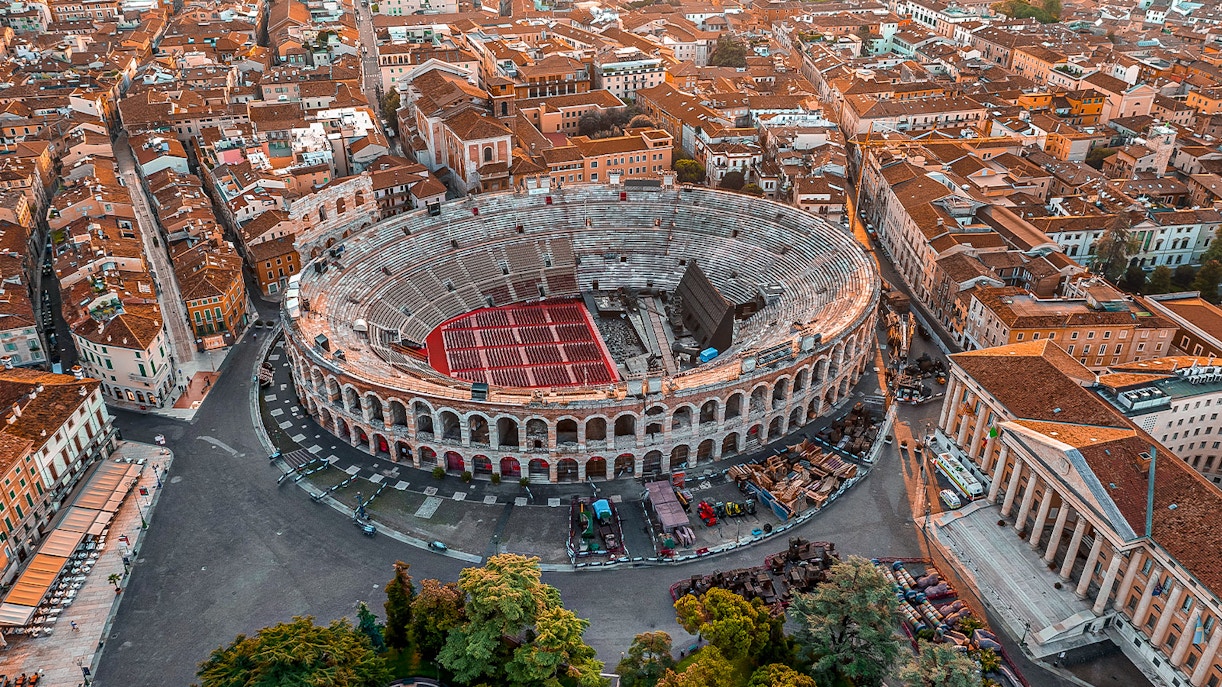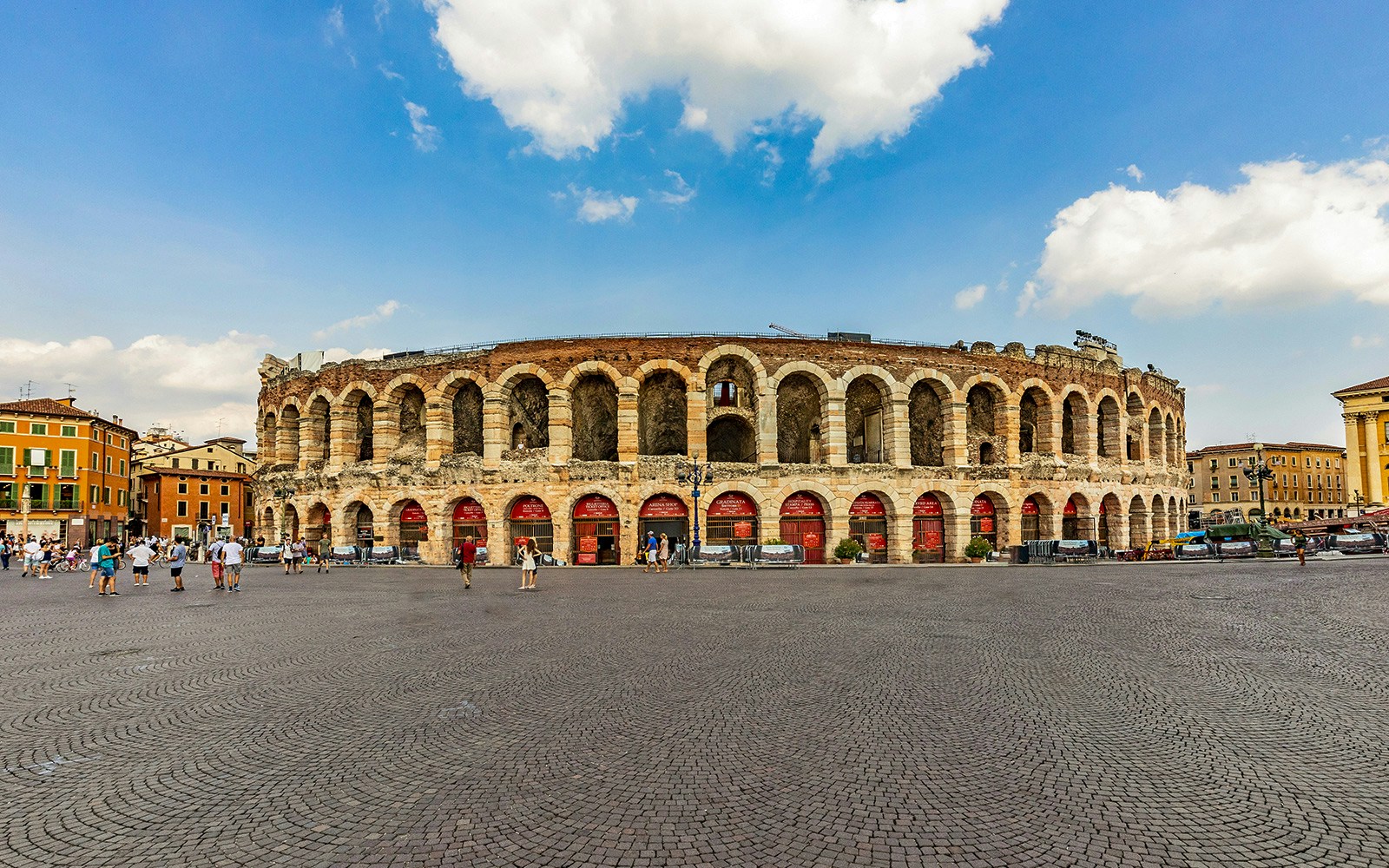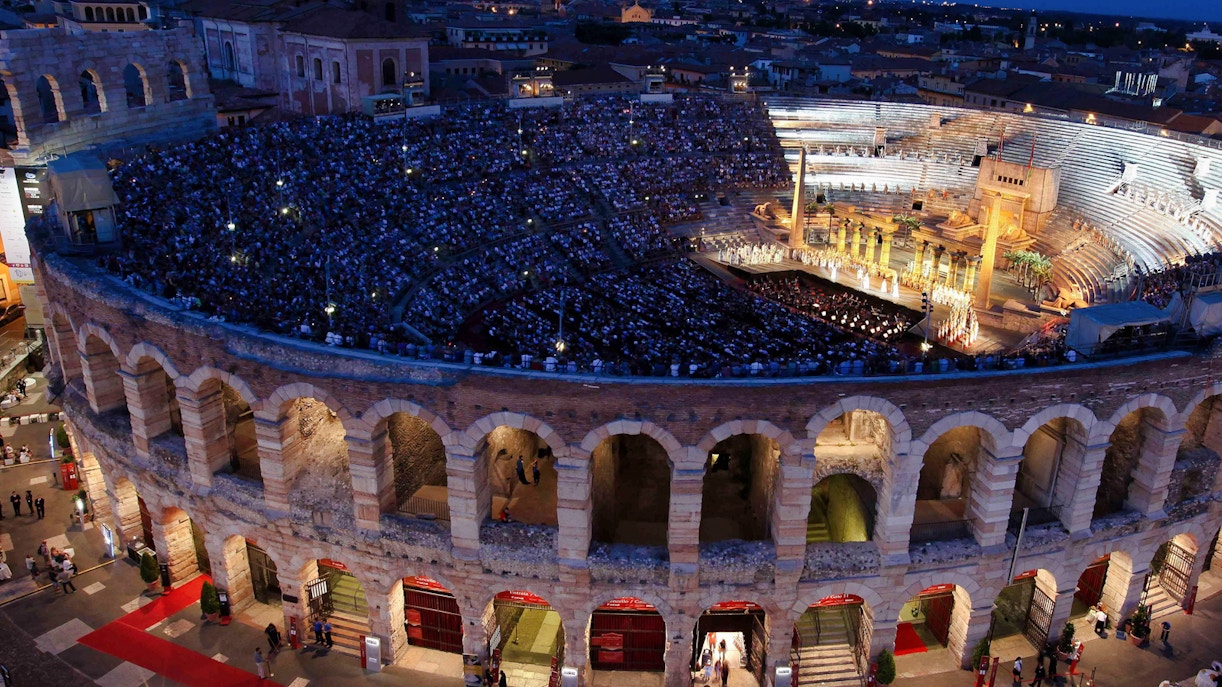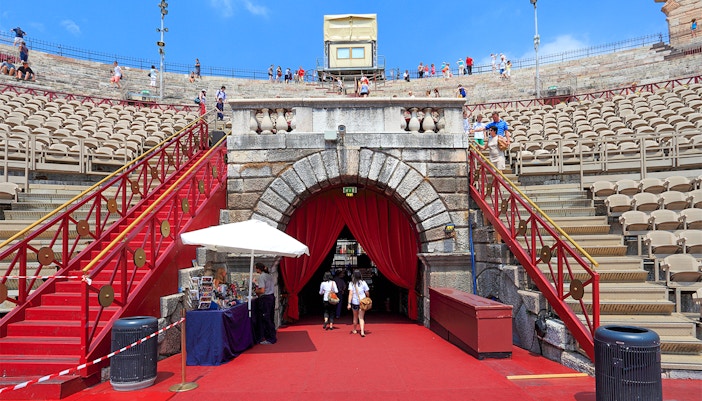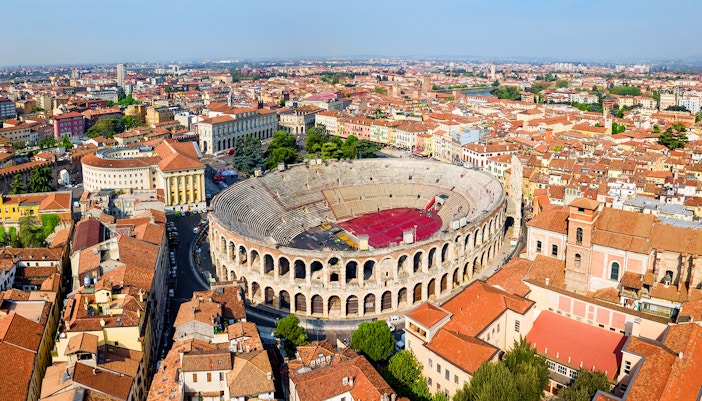History of the Verona Arena
1 AD: The Romans start constructing the Verona Arena.
1117: The strongest earthquake ever recorded in northern Italy wrecks part of the arena.
1590: The first known joust happens here, with knights showing off their horse skills.
1751: People are amazed by a show with a rhinoceros at the arena.
1786: A famous writer named Johann Wolfgang von Goethe visits and loves the arena.
1798: Napoleon watches a hunting event at the arena after his army beats Venice.
1913: The first ever modern opera, Aida by Giuseppe Verdi, is performed.
1945: The arena gets damaged in the World War II but survives.
Today: The Verona Arena still hosts lots of brilliant events, like operas and concerts with famous singers like Yanni, Muse, and Evanescence.
Detailed history of Verona Arena

